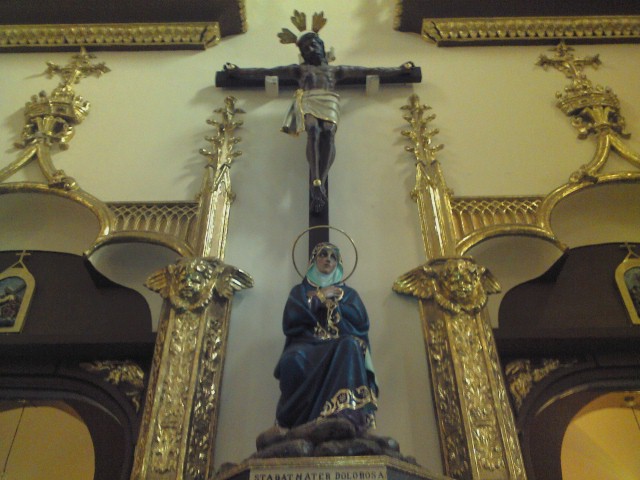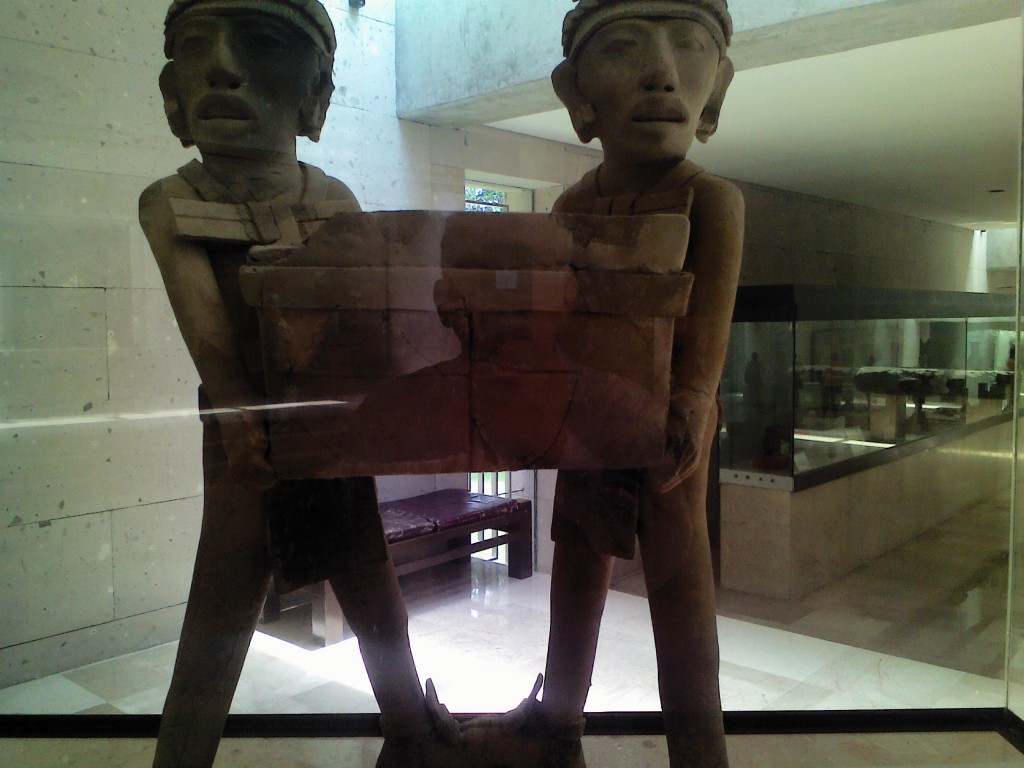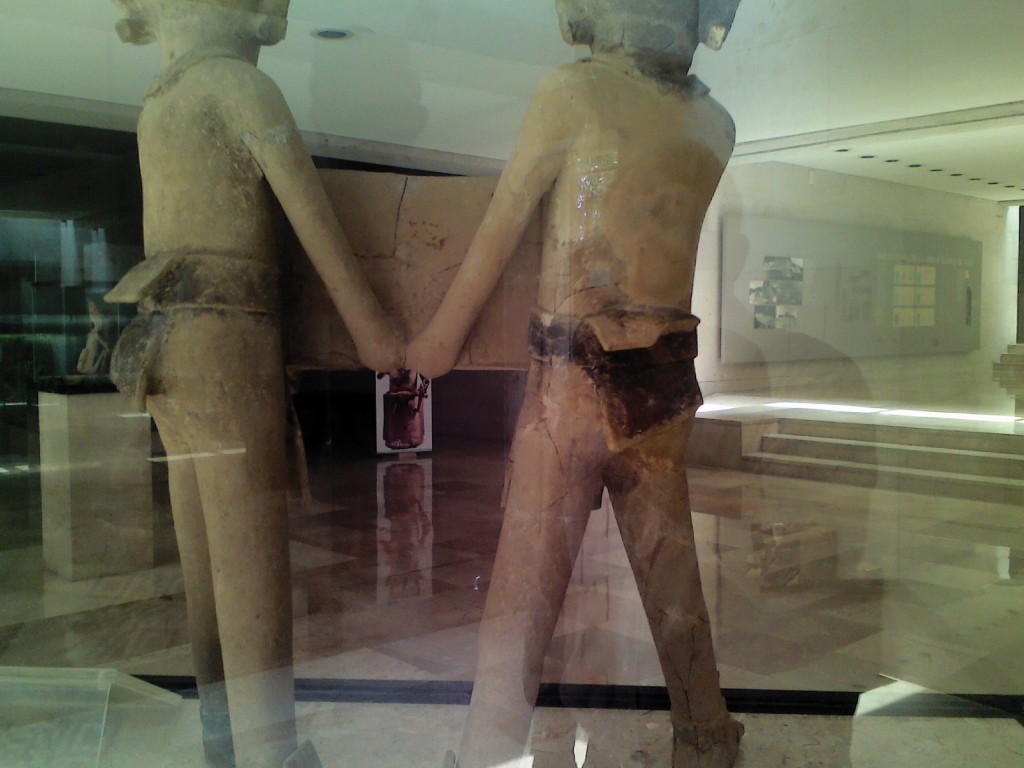Saturday, May 13, 2017
Rachel Levitsky, David Shook, and I had a brief break in the late afternoon of our first full day at FILU in Veracruz, so we walked up a hill past a large public park and briefly visited a market, during which we each fortified ourselves with a cup of strong coffee. We talked about possibilities of visiting the anthropological museum the next day, or of going to the beach in Veracruz. I eventually chose to accompany Forrest Gander and his friend to the museum, and Rachel went to the beach. On Thursday, though, we settled for a quick visit to the Cathedral in Xalapa, which has an enormous statue of the crucifixion of Christ above the altar; the scale of the body is so large and imposing, in fact, that it repels any temptation to be in its immediate vortex. Perhaps this is intentional, for we found ourselves quickly lingering in the rear of the cathedral, where a believer might find solace in the more proportionate depiction of a “Stabat Mater Dolorosa.” We paused only long enough for me to take this photograph, and then headed back to our hotel on a casual route that brought us to a halt. Across the street from a set of outdoor book stalls adjacent to the cathedral was a walkway that led us past an alcove to a large building guarded by a heavily armed soldier. Just past where he stood, I noticed that an interior wall of the alcove had a mural; as I walked closer to take a photograph, I realized that all the walls of this alcove were covered by this mural, “Una revolucion Continua.” It was painted in 2010 by Melchor Peredo, who was born in 1927. I didn’t know his birthdate at the time, so it in retrospect that I express an even greater degree of respect for his skill, commitment and passion. The subjugations depicted in the mural certainly justify the need for the continuity of resistance; in particular, Rachel pointed to the figure of a conquistador stretched out on his side, attempting to sleep, but unable to vanquish the memories of the atrocities he has committed.

The Anthropological Museum at Xalapa has on display the remnants of what survived the European invasion. In particular, I was struck by a piece of sculpture that surpassed most work done in Europe, even at the height of its artistic endeavors. “Gemelos,” which means Gemini, depicts the circulating bond infusing a set of twins who are about to deliver a box whose contents may well be unknown to its carriers. They are primarily conscious of their palpable contact with each other: an overlapping pair of feet is matched by hands rubbing against each other at the rear bottom of the box. The mystery of its contents is amplified by the uncertainty of their joint heft: are they about to move the box to some spot known only to them, or have they just arrived at their destination, and are about to reveal the marvels inside? (While the museum’s lighting is more than adequate to appreciate the extraordinary vivacity of this sculpture, I regret that my antiquated cell phone yielded only this image, smeared with my reflection.)


 About Bill Mohr
About Bill Mohr